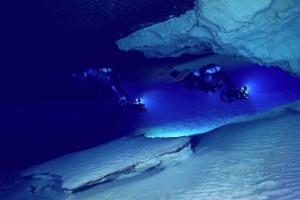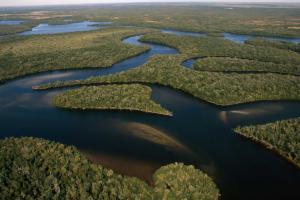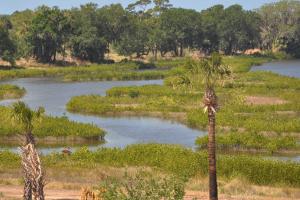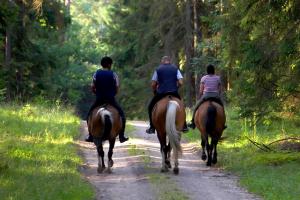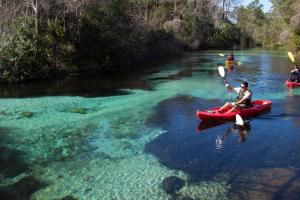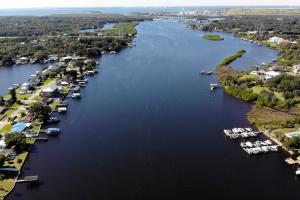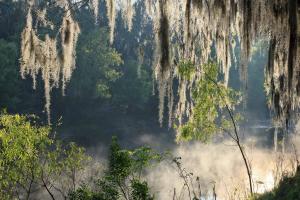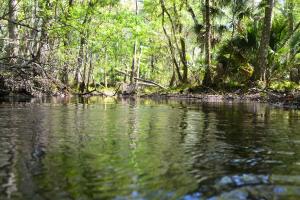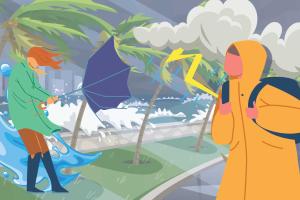Search Content
Displaying results 2781 - 2800 of 5020
The Floridan Aquifer System: A Vital Water SourceDid you know that the Floridan aquifer system stretches over 100,000 square miles and reaches into parts of Alabama, Georgia, and even South Carolina? The upper Floridan aquifer contains about one-fifth the amount of water in all the Great Lakes and is the main source of drinking water for northern and central Florida.What is an Aquifer?An aquifer is an underground layer of rock or…
The Homosassa River is another spring fed river beginning at Homosassa Springs. This short, slow-moving tidal river flows eight miles from the headsprings to where it meets the Gulf of America in Citrus County.The river is a mixture of fresh water from the headsprings and salt water from the Gulf of America. The tidal influence makes the river home to both freshwater and saltwater fish. Some of the freshwater fish you'll find in the Homosassa River include Bluegill,…
The Surface Water Improvement and Management, or SWIM, program evaluates priority water bodies, identifies challenges and implements projects to improve water quality and natural systems. The District is currently updating the SWIM plan for Lake Tarpon and the draft plan is available on the Lake Tarpon webpage. At the public workshop, District staff will present an overview…
Cockroach BayThe Cockroach Bay Ecosystem Restoration Project represents one of the largest, most complex coastal ecosystem restoration projects ever completed for the Tampa Bay estuarine ecosystem.The land suffered from a number of environmental problems including habitat degradation, invasive plant infestation and poor water quality. The Southwest Florida Water Management District (District), Hillsborough County, the Tampa Port Authority and many other agencies and…
Updated February 2025 Section 373.036, F.S. requires the water management districts to prepare a "Consolidated Water Management District Annual Report” consisting of several reporting documents that had historically been submitted separately. The legislation requires the consolidated report to be submitted by March 1 of each year to the Governor, DEP, the President of the Senate and the Speaker of the House of Representatives. In addition, copies must be provided, “… to…
Advanced technology has reached nearly every single aspect of the District in one way or another throughout the organization’s history, most notably in the past two decades.
“The technological changes during my tenure alone were like going from horse and buggy to putting a man on the moon in a very short period of time,” said Pete Hubbell, District executive director from 1988 to 1997.
Information Resources
In the early 2000s, the District’s operating system…
NEW Regulatory Inquiry Form: An easy way to directly connect with the appropriate permitting staff regarding your comments, questions or citizen complaints. Your submittal will be routed to appropriate staff, who will contact you back by phone or email with a response. You also have the option to remain anonymous.…
Viewing the pine flatwoods, cypress ponds and wildlife-filled wetlands on horseback is one of the many great recreational experiences that can be enjoyed on District lands.
A Time-Honored Tradition
Long-distance rides, multiday rides and overnight trail camping are some of the unique equestrian opportunities offered. Lands that have enough trail miles for a half-day ride or longer are generally open for equestrian use. Equestrian parking areas have been designed to…
Pursuant to Section 112.3261, Florida Statutes, starting July 1, 2014, a person may not lobby a water management district until such person has registered with that district. A person wanting to lobby the Southwest Florida Water Management District is urged to read the full…
Stay Informed on Prescribed BurnsConducted by the Southwest Florida Water Management DistrictSign up for email and/or SMS alerts about scheduled prescribed burns in your selected region. Enter your contact details below and stay up to date! 🔒 Your information is secure and will only be used for notifications.
As bureau chief of Environmental Resource Permitting (ERP), Dave Kramer is responsible for setting goals and objectives for the bureau, developing and managing the budget and financial decisions, managing direct reports (ERP managers, chief environmental scientists, agricultural team staff) and executing environmental resource permitting and compliance. In addition, Kramer collaborates with other bureaus and divisions, serving as a member of the Senior Staff team,…
Volunteers are a valuable resource for the District, which is why several groups and one individual who take part in the District’s Land Resources Volunteer Program were recognized at the Governing Board’s August and September meetings.
The Flatlanders, Southcreek Equestrians, Florida Trail Association, Withlapopka Community Volunteers, West Central Florida Council of the Boy Scouts of America and Kyle DeVary were presented with the President’s Volunteer Service Award — a…
Project Overview
An ecologically-based study was completed to evaluate how recreational use affects natural systems along the Weeki Wachee River in Hernando County, Florida. The study, known as a carrying capacity study, is intended to provide information to assist in making decisions that will better manage impacts of recreational use on this natural system.
Background
The beauty of the river makes it a popular site for recreational activities. There are…
Why is the Water Management Information System (WMIS) that provides Environmental Resource Permitting (ERP) and eCompliance functions, data and documents being replaced?Although, the existing system is functional, the process is challenging, and the product lifecycle is ending. Users of the system such as District staff, external consultants and permittees often find system errors and inconsistent functionality. The completion of the ePermitting Modernization Project…
Take a journey down the Alafia River. Spanish explorers called it the Hunting River. Mocoso Indians called it River of Fire. It’s a historic water body with a prehistoric name that spans 25 miles long in west-central Florida.
Let's get started on our excursion
The Southwest Florida Water Management District welcomes comments and questions from the public in accordance with the District’s Social Media Policy (Policy). However, staff reserve the right to report or remove any postings that violate this Policy. That includes posts that:
- Contain vulgar, explicit, or obscene language and/or images.
- Contain threats, harassment, libel, or incite violence and/or illegal activity.
- Spam from bots.
- Posts with…
Register or Login for Permit Noticing by Email »
By clicking on the link directly above, account holders can subscribe to receive information by email about new applications or agency action. An email notification will be sent daily based on the criteria entered and when applicable.…
The Peace River begins in northern Polk County at the junction of Saddle Creek and the Peace Creek Drainage Canal northeast of the city of Bartow. From there, it runs approximately 105 miles south to the Charlotte Harbor estuary, where it blends with the outflows of the Caloosahatchee and the Myakka rivers. Its watershed encompasses more than 2,300 square miles and is called the Peace River Valley by locals. A watershed is an area of land that water…
Unlike the clear, cool waters of the Springs Coast Watershed's spring-fed rivers, the Pithlachascotee is a blackwater stream that is more than 20 miles long and originates in the Crews Lake area of Pasco County. Along with the Anclote River, the locally nicknamed "Cotee" River crosses the District's Starkey Wilderness Park and meanders through Pasco County. It…
There aren’t many big predators walking around in Florida. Wolves are gone, bears are rare and panthers are nearly extinct. But in the water, it’s different. Florida’s fresh water has alligators and crocodiles — big toothy reptiles. In the ocean there are sharks — big toothy fish. Of course, gator and shark attacks are rare, but it happens enough to make us all a bit nervous.
It’s great to be able to share the state with animals that have been living here for millions of…

